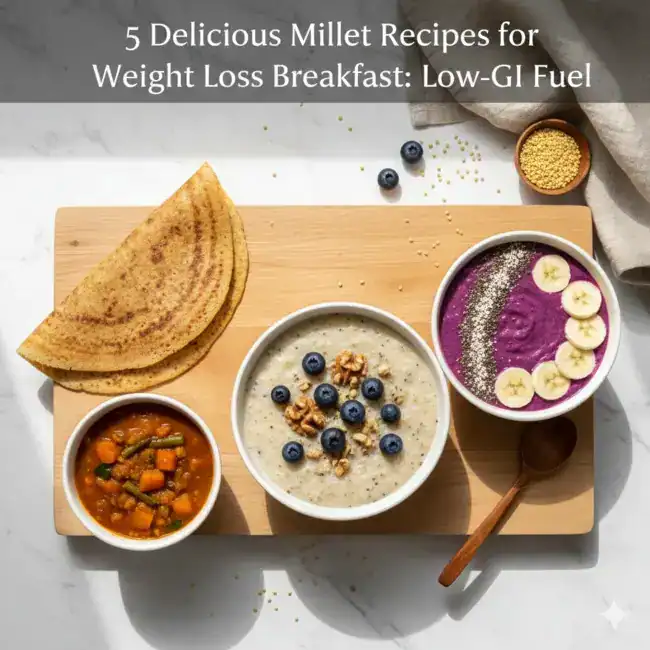5 Delicious Millet Recipes for Weight Loss Breakfast: Low-GI Fuel
In the competitive landscape of health and wellness, the choices made at breakfast time often determine the success of long-term weight management goals. For those seeking alternatives to high-glycemic index (GI) grains like refined wheat or rice, millets represent a powerhouse of nutrition that supports satiety, stable blood sugar, and sustained energy . This comprehensive guide details the scientific justification for incorporating 5 best millet recipes for weight loss breakfast into your routine and presents five high-utility, delicious recipes optimized for minimum effort and maximum nutritional impact.
The Path to Rank 1: Why Millets Are Your Ultimate Weight Loss Fuel
Achieving optimal results in a weight loss regimen requires understanding the interplay between nutrient density, satiety, and metabolic response. Millets, a group of ancient, small-seeded grasses, provide a profile that consistently outperforms many mainstream grains, making them an essential ingredient for any health-conscious diet .
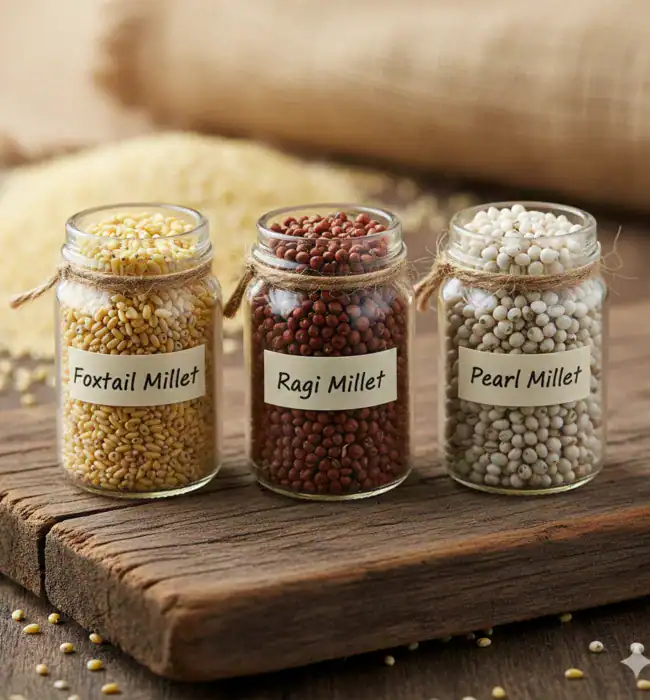
The Power of Low Glycemic Index (GI)
A major determinant of a food’s weight loss potential is its glycemic index (GI)—a measure of how quickly a food raises blood glucose levels. When consuming refined carbohydrates, a rapid spike in blood sugar often leads to an excess release of insulin, which signals the body to store energy as fat. The inevitable “crash” that follows triggers intense hunger and cravings, sabotaging calorie control.
1Millets mitigate this challenge effectively due to their low-to-medium GI value. The average GI score for millets is 52.7, a significantly lower value compared to maize, refined wheat flour, and refined rice . Specific millet preparations, such as dosa and mudde, have been tested and classified as having a low GI (below 55).2 This low glycemic response ensures that energy is released slowly into the bloodstream, stabilizing blood sugar levels and preventing the sudden spikes that lead to overeating .
Furthermore, dietary interventions incorporating millets have demonstrated a positive effect on metabolic health, showing significant reductions in Fasting Blood Sugar (FBS) and glycosylated hemoglobin ($\text{HbA}_{1c}$) in pre-diabetic subjects.2 This clinical evidence strongly supports the role of millets in metabolic management, which is closely intertwined with weight regulation.
Millets for Post Pregnancy Nutritional Benefits
Satiety: The Fiber and Protein Advantage
Successful weight loss hinges on curbing overall calorie intake without feeling deprived. Millets are exceptional tools for achieving this due to their remarkable content of dietary fiber and protein, both key nutrients for promoting satiety (the feeling of fullness) .
Millets are rich sources of dietary fiber; for instance, Jowar (Sorghum) contains 8.5g of fiber per 100g, while Foxtail Millet boasts 8.0g per 100g.3 This high fiber density is the primary driver for sustained fullness. Research indicates that the richness of fiber in millet-based food increases gastric volume and prolongs gastric emptying time . Essentially, the food stays in the stomach longer, reducing the “hunger index” and postponing the urge to snack between meals .
Protein also plays a critical role, contributing to satiety, preserving lean muscle mass during fat loss, and supporting active metabolism.4 Foxtail millet, with 12.3g of protein per 100g, and Jowar, with 11.6g, are particularly potent in this regard.3The combination of high fiber and high protein content creates a slow-digesting, nutrient-dense breakfast that keeps energy levels steady for hours, eliminating the desire for high-calorie, low-nutrient snacks typically consumed mid-morning .
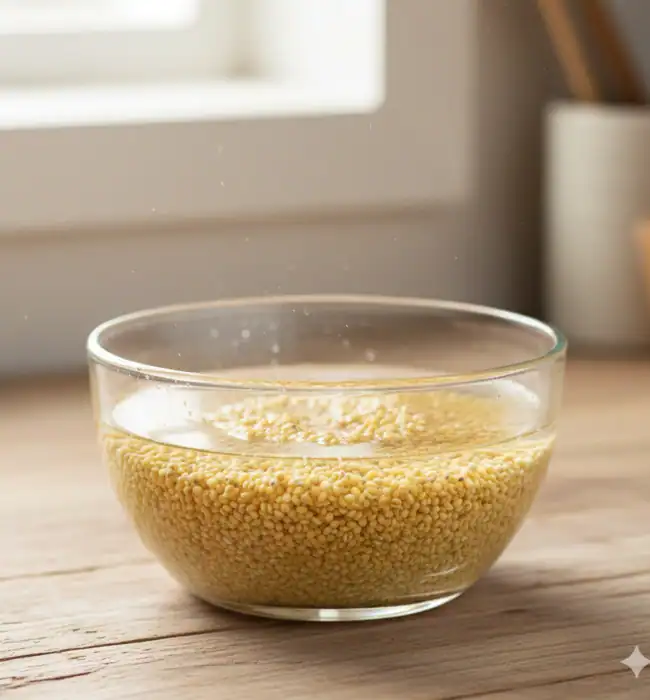
Millet vs. Oats: Choosing the Better Breakfast Grain
Oats are a popular healthy breakfast staple, but a direct comparison reveals specific advantages that position millets as a superior choice for certain weight loss goals. Both grains promote satiety, but they differ in composition and glycemic response .Oats are renowned for their high content of soluble fiber, specifically beta-glucan, which is effective at lowering LDL (bad) cholesterol .
Oats also tend to be slightly higher in overall protein content (13g per 100g) . However, millets possess distinct benefits: they are naturally gluten-free, a crucial factor for individuals with gluten sensitivities or celiac disease . Critically, millets generally maintain a lower glycemic response, making them a better choice for those prioritizing strict blood sugar control or managing metabolic conditions like type 2 diabetes .
Millets are also packed with essential minerals, notably magnesium, which supports vascular relaxation and aids insulin sensitivity, further facilitating weight management .
The decision often comes down to individual needs: for optimal blood sugar regulation and guaranteed gluten-free options, millets are the preferred grain .
Table: Comparative Nutritional Snapshot of Key Millets (per 100g)
| Millet Type | Calories(Kcal) | Protein(g) | Fiber | Key Weight Loss Benefits |
| Ragi(finger millet) | 329 | 10.0 | 4.1 | High calcium, Reduce Cravings |
| Jowar(sorghum) | 378 | 11.6 | 8.5 | Highest Fiber,Supports active Metabolism |
| Foxtail Millet | 331 | 12.3 | 8.0 | High Protein, Supports Muscle Preservation. |
| Pearl millet (Bajra) | 335 | 7.3 | 3.6 | Excellent Satiety Profile |
Preparation Mastery: Maximizing Nutrient Bioavailability
To fully leverage the nutritional density of millets, proper preparation techniques must be employed. Like many ancient grains, millets contain naturally occurring compounds known as anti-nutrients (such as phytates and tannins) that can bind to essential minerals and reduce their absorption.Expert consensus strongly recommends pre-processing millets before consumption.
The most effective method is soaking the millet in water for 8–12 hours.6 This step activates enzymes that effectively break down anti-nutrients. For example, soaking Kodo millet has been shown to increase protein digestibility from 62.3% to 76%.7 Fermentation, typically for 12–24 hours, can further enhance this process, reducing phytate content by 20% and significantly increasing the bioavailability of micronutrients like calcium, zinc, and iron.
By taking the critical step of soaking before cooking, one ensures that the body maximizes the uptake of protein and fiber, accelerating the intended metabolic and weight loss benefits.Soaking also improves the final texture of the cooked millet, making it creamier for porridge and significantly reducing the overall cooking time, thereby making healthy meal preparation easier for busy mornings .
The 5 Best Millet Recipes for a Weight Loss Breakfast
The following recipes are chosen for their diverse nutritional profiles, ease of preparation, and effectiveness in supporting a weight loss regimen through high fiber, high protein, and low glycemic impact.
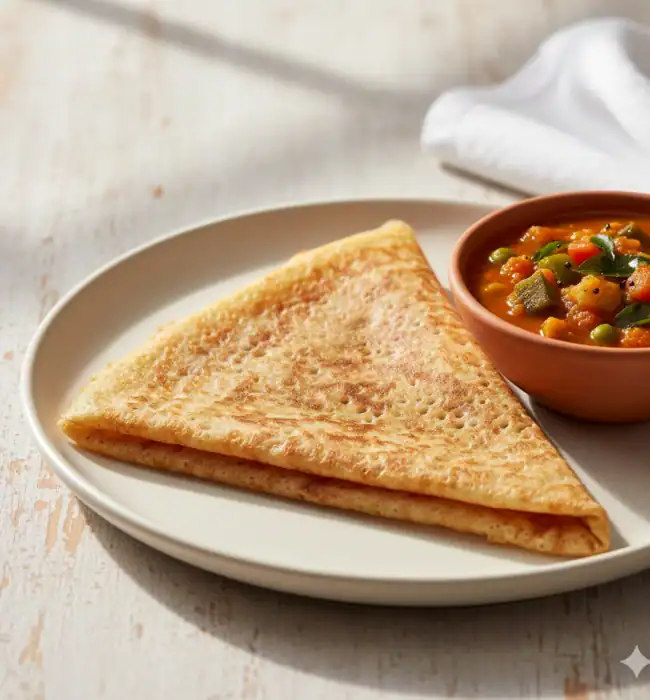
1. High-Protein Ragi Dosa (Finger Millet Pancake)
This recipe capitalizes on Ragi’s status as a weight loss superfood, specifically due to its high concentration of calcium and protein, which helps curb appetite and sustain energy. By swapping traditional rice batter for Ragi (finger millet) flour, this quick breakfast provides a superior nutritional profile.
Preparation and Ingredients:
This instant version requires minimal morning prep time (approximately 10 minutes assembly).
- Millet Base: 1/2 cup Ragi (Finger Millet) flour.
- Batter: 1.25 cups water, salt to taste, green chili-cumin paste.
- Instructions: Mix the Ragi flour, water, and spices to form a thin, flowing batter. Heat a non-stick pan, lightly brush with oil, and pour a ladleful of batter, spreading thinly to create a crisp dosa. Cook for 2-3 minutes until golden brown.
- Weight Loss Tip: To maintain a low-calorie density, use vegetable sambar or a light tomato chutney instead of high-fat coconut chutney. Boosting the vegetable content in the batter (onions, carrots) increases the fiber volume without adding significant calories.
2. Satiety-Boosting Savory Barnyard Upma (Kuthiraivaali)

Upma is a classic, comforting Indian breakfast often made with semolina (sooji). Swapping the semolina for Barnyard Millet (Kuthiraivaali), a fiber-rich “strong contender” for weight loss , transforms this dish into a powerful tool for satiety. Savory breakfasts are generally considered superior to sweet ones for maintaining stable blood sugar through the morning.
Preparation and Ingredients:
The total cooking time is approximately 20 minutes (5 minutes prep, 15 minutes cook) .
- Millet Base: 1 cup Barnyard Millet (Kuthiraivaali), rinsed .
- Liquid Ratio: 2 cups water .
- Tempering: 1-2 tablespoons ghee/oil, mustard seeds, urad dal, channa dal, chopped onion, ginger, green chili, and curry leaves .
- Vegetables: Chopped carrots, peas, or cabbage .
- Instructions: Heat oil, temper the seeds and lentils. Sauté onions and vegetables until soft. Drain the rinsed millet and add it to the pan, stirring well. Pour in the water and salt, cover, and cook for 10-15 minutes until the millet is tender and the liquid is absorbed. Sprinkle with lemon juice and fresh cilantro before serving .
- Weight Loss Tip: Before cooking, dry roast the barnyard millet briefly. This technique imparts a nuttier flavor and results in a fluffier, less sticky texture, which improves palatability. Incorporate boiled chickpeas or extra lentils into the upma to maximize the protein and complex carbohydrate ratio .
3. Creamy Foxtail Millet Porridge (Sweet or Savory)
Millet porridge serves as a high-fiber, gluten-free replacement for traditional oatmeal. Foxtail millet, known for its high protein and ability to create a creamy texture similar to “mellow quinoa” , provides sustained energy release, making it ideal for the start of the day.

Preparation and Ingredients:
The cook time is longer (25-30 minutes), making overnight soaking highly recommended .
- Millet Base: 1 cup Foxtail or Kodo Millet (pre-soaked overnight).
- Liquid: 2 cups water or 1 cup water and 1 cup almond milk (or low-fat milk) .
- Sweet Version: Natural sweetener (honey, maple syrup, or chopped dates), cinnamon, and vanilla extract .
- Savory Variation: Sautéed onions, spinach, and black pepper, cooked in broth instead of water/milk.
- Instructions (Sweet): Combine soaked millet, water, and milk in a saucepan. Bring to a boil, then reduce heat and simmer for 20-25 minutes until the millet is tender and creamy. Stir in sweetener and cinnamon .
- Weight Loss Tip: Utilize the expert preparation technique of soaking the millet overnight. This not only reduces the morning cooking time but also ensures a soft, creamy texture, making it more appealing than standard cooked grains . Always top the porridge with fresh fruits (like berries or bananas) and high-fiber nuts/seeds for additional crunch and sustained fullness .
4. Power-Packed Millet Smoothie Bowl
For individuals with extremely demanding schedules, the Millet Smoothie Bowl is the ultimate 10-minute solution, providing a concentrated dose of fiber, protein, and essential nutrients . This recipe relies on having cooked millet ready ahead of time.

Preparation and Ingredients:
This is a quick assembly recipe with a preparation time of only 10 minutes .
- Millet Base: 1/4 cup cooked millet (Kodo, Foxtail, or Little Millet).
- Liquid/Fruit: 1 ripe banana, 1/2 cup almond milk or fresh coconut milk.
- Protein Boosters: 2 tablespoons almond butter, sunflower seeds, or 1 scoop of protein powder.
- Sweeteners/Flavor: 4-5 dates or jaggery (adjust to taste).
- Instructions: Blend the cooked millet, banana, almond milk, and almond butter until perfectly smooth. Pour the thick mixture into a bowl .
- Toppings: Top with high-fiber ingredients like chia seeds, fresh fruits (such as jamun berries), and nuts.
- Weight Loss Tip: Batch cooking millets once or twice a week is crucial for making this recipe truly instant. For maximum satiety and a thicker texture, use frozen banana or berries in the blend; the cold temperature may also slightly slow down gastric emptying .
5. Chilled High-Fiber Millet Salad or Curd Rice
Chilled, complex carbohydrate dishes are excellent for weight loss, particularly those rich in fiber and beneficial probiotics (like curd/yogurt). This recipe is perfect for pre-making and enjoying on the go.
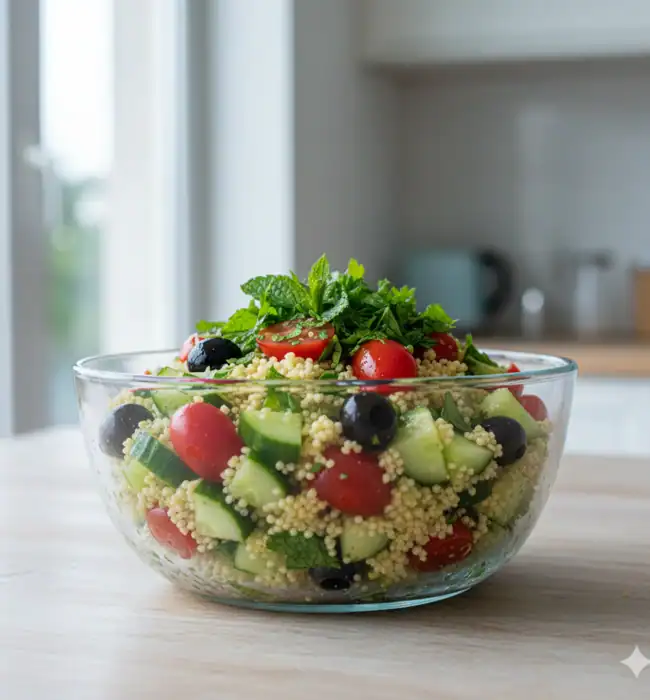
Preparation and Ingredients:
Requires 15 minutes of assembly time (assuming pre-cooked millet) .
A. Millet Salad (Mediterranean Style):
- Millet Base: 2 cups cooked millet (Little Millet or Pearl Millet) .
- Veggies/Protein: Diced cucumber, chopped tomato, 1 can boiled chickpeas, olives, and crumbled feta cheese .
- Dressing: Olive oil, fresh lemon juice, salt, pepper, and fresh herbs (mint, parsley).
- Instructions: Combine the cooled, cooked millet with all chopped vegetables, chickpeas, and feta. Toss gently with the light dressing and serve chilled .
B. Millet Curd Rice (Gut-Friendly Option):
- Millet Base: Cooked and partially mashed Little Millet or Foxtail Millet .
- Liquid: 3/4 cup plain yogurt (curd), thinned with a small amount of milk or water .
- Tempering: Oil/ghee, mustard seeds, urad dal, chopped ginger, green chilies, and curry leaves.
- Instructions: Mix the cooled, cooked millet with the beaten curd and salt. Temper the spices and pour over the mixture. Garnish with chopped cilantro and pomegranate arils .
- Weight Loss Tip: When preparing the salad, ensure the vegetable-to-millet ratio is maximized (ideally 50/50 or more). This increases the overall volume of the meal and fiber content, leading to powerful satiety without increasing caloric density .
Expert Q&A: Addressing Common Millet Misconceptions
To successfully integrate millets into a daily weight loss strategy, it is necessary to address common practical and nutritional concerns that often deter consumers.
Are millets genuinely better than rice or wheat for weight loss?
The nutritional composition provides clear advantages for millets when the goal is weight management. Millets consistently surpass refined grains like white rice and refined wheat in terms of fiber and micronutrient density . The key difference lies in the glycemic response: the high GI of white rice triggers rapid blood sugar spikes, whereas the low GI of millets ensures a gradual energy release .
This sustained release of energy avoids the common “spike-and-crash” cycle that drives cravings and subsequent overeating.Therefore, replacing refined grains with millets is a fundamental and highly effective dietary change for metabolic health and sustained weight loss.
Which is the best millet for weight loss?
While Foxtail millet and Jowar (Sorghum) stand out due to their high fiber and protein content, respectively , the concept of a single “best” millet is oversimplified. Different millets offer unique nutritional benefits: Ragi provides high calcium, Little Millet is extremely rich in fiber, and Kodo millet aids detoxification.
For optimal weight loss and holistic health, experts advise consuming a variety of millets through rotation or using multi-millet blends.Rotation ensures a broader intake of vitamins and minerals and prevents potential nutrient imbalances that could arise from the excessive, monotonous consumption of any single grain.
Do millets taste bland or take too long to cook?
This is one of the most persistent misconceptions preventing wider millet consumption . Millets possess a distinct, slightly sweet and nutty flavor profile, offering much more character than many perceive. Their versatility allows them to seamlessly adapt to both sweet (porridge, kheer) and savory (upma, salad) preparations .
Regarding preparation time, the perceived lengthy cook time is drastically reduced through proper technique. By pre-soaking the millets (8-12 hours), the grains soften and the cooking duration is minimized, making them just as convenient as rice or quick-cooking oats . This pre-treatment step allows even dense millets to cook quickly enough for busy weekday mornings .
Do millets have any side effects if eaten daily?
Millets are generally safe and beneficial for daily consumption, especially when replacing less nutritious refined grains .
However, as with any food, moderation is key .The primary concern relates to announcement. High concentrations of compounds like phytates and tannins, if consumed without proper preparation, can interfere with mineral absorption. This is why preparatory methods—specifically soaking, germination, and fermentation—are vital.
These processes effectively break down antinutrients, enhancing nutrient bioavailability (protein, zinc, iron) and ensuring maximum digestive comfort. Provided millets are soaked and consumed as part of a balanced and varied diet, they pose no adverse effects and contribute significantly to improved digestion and health .
Conclusion: Making Millets a Weight Loss Lifestyle
The integration of millets into the breakfast routine represents a strategic, data-supported shift toward highly effective weight management. Their combination of a low glycemic index, exceptional fiber and protein content, and inherent gluten-free nature positions them as the optimal grain for achieving sustained satiety and metabolic stability. Clinical evidence supports their ability to reduce blood sugar and curb hunger, directly addressing the core challenges of successful calorie control.
To ensure the success and adherence to a millet-based diet, practical application is paramount. The most actionable recommendation is to leverage batch preparation—cooking a large quantity of millet once or twice a week. Having pre-cooked millet readily available transforms complex recipes like upma, porridge, and smoothie bowls into rapid, 10-minute breakfasts, maximizing convenience and guaranteeing that these high-quality, low-GI meals become a sustainable part of a healthy, weight loss-focused lifestyle .

